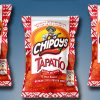A 3-step Washing Solution for Chip Slices

The three-step slice washing system is used in the chips production industry to wash away surface starch from potato slices after cutting. With the latest development by Rosenqvists Food Technologies, the system is further developed, offering some unique features.
The potatoes are sliced to a thickness of between 1.1 and 2 mm, depending on the required product. When cutting, the cell membranes, as well as cells, are opened/damaged.
“The cell fluid containing free amylose and other substances as well as the inner starch granules leaks out as ‘free starch’. This causes a considerable tendency towards stickiness during frying and the slices are thus washed before this operation to eliminate this problem,” Magnus Kalling, the R&D manager at Rosenqvists Food Technologies explained.
After potato chips were first manufactured on an industrial scale thirty years ago, several different types of slice washers were developed. Line capacities have increased to over 3,000 kg of finished potato chips per hour, with an estimated hourly input of around 11,000 kg of potato slices.
“At this capacity and with a slice thickness of 1.1 mm of the sliced potatoes, it is possible to calculate that a surface area of over fifty square meters (>50 square meters) must be washed every second. Water consumption usually exceeds one cubic meter per tonne of potatoes (>1 cubic meter/ton) and is therefore considerable,” Kalling added.
Washing Performed in Several Steps
As the lines operate on the three-shift production schedule, with minimal downtime for cleaning, there is a gradual starch build-up on all surfaces of the fryer that in time increases to such an extent that production is disturbed, and cleaning becomes necessary.
The cause of this build-up in the fryer is the residual starch granules that float around in the surface water around the chip slice. These are not bound to the potato slice and float with the frying oil; after a few seconds the starch is rendered adhesive, and the water begins to evaporate. The starch granule now undergoes a phase in which it is very sticky and adheres easily to metal surfaces as well as other surfaces.
The slice washing system that Rosenqvists Food Technologies has designed, implies in principle that washing is performed in several steps, where the water is separated and cleaned of particles, to be subsequently pumped back to a preceding stage. In this manner, the slices encounter the cleanest water upon exit and this water is then used in the preceding wash stages.
“This concept is logical, but the challenge lies in producing a design that at the same time is hygienic, minimizes foaming effects, efficiently utilizes floor space, and can be practicably adaptable to the layout of different plants. The three-step slice washer from Rosenqvists Food Technologies solves all challenges above,” the company’s expert mentioned.You can read the rest of this article in your complimentary e-copy of Issue 2 of Potato Business Dossier 2022, which you can access by clicking here.

















